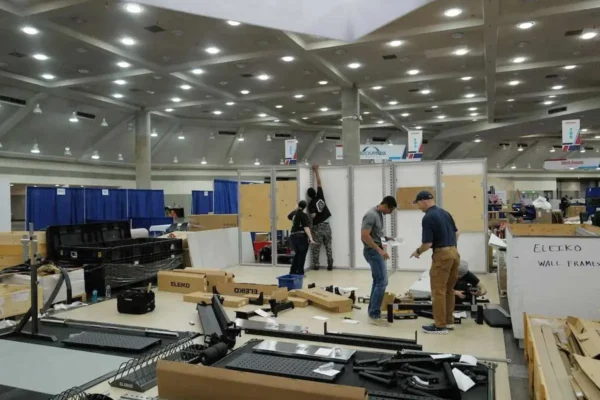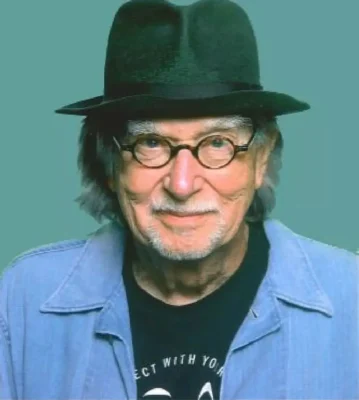Although the technology’s roots are 175 years old, 3-D still packs a punch when it comes to crowd-pleasing.
 3-D or “stereoscopic” images, which every moviegoer knows well, result from shooting a scene from two perspectives, then merging the two for the viewer, usually through a pair of special-purpose glasses, to create a “realism” that 2-D images lack.
3-D or “stereoscopic” images, which every moviegoer knows well, result from shooting a scene from two perspectives, then merging the two for the viewer, usually through a pair of special-purpose glasses, to create a “realism” that 2-D images lack.
“The camera is capturing two channels,” said Tim Lorenz, senior account executive for Interface Media Group, a Washington, DC-based film and video production company. “One represents your left eye and one your right. When the two channels are displayed through the 3-D glasses, you get a three-dimensional look at the world.”
Exhibitors like the technology because no matter the subject of the presentation, a crowd seems to materialize magically whenever images are displayed in 3-D.
But a successful 3-D presentation at a tradeshow demands a lot of space and planning.
For starters, there’s the viewing area.
“Exhibitors have to quarantine a portion of their footprint for the display, control the ambient lighting, and have a means for handing out the glasses,” said Lorenz.
Then there’s crowd control. Although 3-D can draw a lot of viewers, a few viewers are what you want.
“3-D works best for small audiences, 20 or 30 viewers at most, if you’re playing it on 50 or 60-inch LCD monitors,” said Lorenz.
That’s because 3-D playback has “sweet spots.” Watching a presentation from inside one of these makes the stereoscopic experience effective; watching it from anywhere else doesn’t.
The sweet spots, no surprise, are mid-row.
“You need to funnel people into the sweet spots before you begin your presentation,” said Lorenz. “You really don’t want them standing anywhere but in the middle.”
The need for crowd control suggests that you schedule your 3-D presentations, rather than loop them continuously, according to Lorenz.
“Make your 3-D presentation an event within the event,” he suggests.
With the proper plan in place, displaying a dynamite 3-D presentation at a tradeshow doesn’t have to be a bear.
Producing one before the show is whole different animal. First you need to decide whether to shoot in 3-D or the “retrofit” a 2-D presentation.
“You can shoot in two channels and master your piece as a dual-channel piece,” said Lorenz. “But you can also retrofit an existing 2-D piece and within certain technical limitations, make it 3-D.”
Retrofit pieces are more economical, but that doesn’t mean they’re cheap. And not every 2-D piece lends itself to 3-D retrofitting. Because they were never actually “shot,” 2-D animated films and videos, for example, are better suited to 3-D retrofitting than live-action videos. The results will be more convincingly “real” and the price tag won’t sink your budget. For example, director James Cameron’s recent 3-D retrofit of his three-hour live-action film, Titanic, cost $18 million, according to Lorenz.
Alternatively, you can display a 2-D presentation, whether animated or live-action, in 3-D by using a special-purpose projector. As with retrofit pieces, the results can appear quite “real.” You can also use a so-called “auto-stereoscopic” monitor to display your 2-D piece. These monitors display 3-D images while freeing viewers of the need to wear special glasses. The results are credible.
However, if you want the full, unadulterated realism that 3-D delivers, you must produce your presentation in 3-D. That decision raises two challenges.
The first one is technical.
Shooting in 3-D demands particular expertise. The better 3-D camera systems typically have two lenses that are yoked, Lorenz explains. To produce the same streams of images our right and left eyes produce, the two lenses’ zoom and focus must be synced by the operator. It’s a tricky act and rules out many of the shooting techniques that are part of the filmmaker’s classic toolkit. Most 3-D shots have to be “lock down” shots, free of any movements by the camera. Shooting in 3-D also requires extra crew members who are in charge of making sure the dual cameras capture all the imagery in a useable way.
The second challenge is financial.
Shooting a 3-D piece, because of the special expertise demanded, translates rapidly into dollar signs.
“The production crew is bigger,” said Lorenz. “Besides the regular crew members, there are the 3-D specialists. You’re probably talking four times the cost of what a comparable 2-D production would normally be. So if you were going to produce a $25,000 video in 2-D, to get the same production values in 3-D is probably going to run you $100,000.”
Given its hefty price tag, exhibitors should be choosy about asking for 3-D.
Lorenz recommends the effect to companies like those in pharma that want to depict intricate subjects, such as molecular structures.
“Using 3-D to show the complex business going on inside a new drug would be a magical, eye-opening experience that would certainly make financial sense,” he said.
But presenting simple, everyday subjects, such as people walking on the street or working in an office, would have equal impact in 2-D.
“You have to weigh the content against the impact you plan to deliver,” said Lorenz. “3-D might not be the solution you want. You might be able to create a whizz-bang 2-D video, play it on a big screen, and accomplish the same thing a 3-D piece would accomplish. But if you’re looking to build a buzz at a show and attract people to your booth, you might have a justifiable reason for 3-D.”
Bob James is director of marketing for ITN International, an event analytics company known for pioneering the use of NFC (short-range wireless) within the exhibitions industry. With operations in China, France, the UK and the US, ITN International provides exhibitors—more than 150,000 of them—with innovative lead management solutions based on NFC.





























